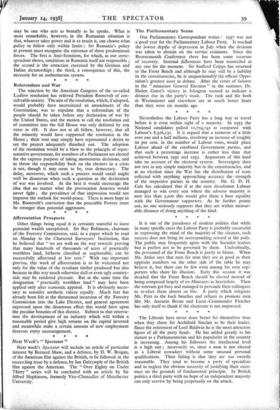Nevertheless the Labour Party has a long way to travel
before it is even within sight of a majority. In 1935 the National candidates polled 11,704,745 as compared with Labour's 8,326,131. It is argued that a turnover of a little over one and a half millions, involving an increase of roughly 20 per cent. in the number of Labour votes, would place Labour ahead of the combined Government parties, and that such a percentage increase is rather less than that achieved between 1931 and 1935. Arguments of this kind take no account of the electoral system. Sovereignty does not rest in any simple majority but in the constituencies, and at no election since the War has the distribution of seats reflected with anything approaching accuracy the strength of the respective parties in the country. Mr. G. D. H. Cole has calculated that if at the next dissolution Labour managed to win every seat where the adverse majority is now less than 5,000 this would give them a bare equality with the Government supporters. As he further points out, no one seriously supposes that they are within measur- able distance of doing anything of the kind.
* * * *






































 Previous page
Previous page